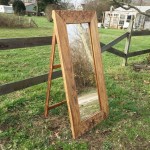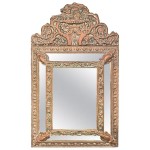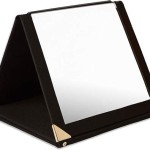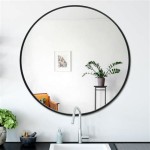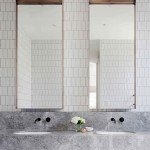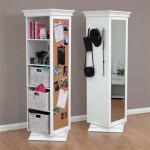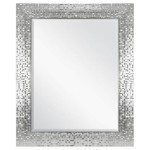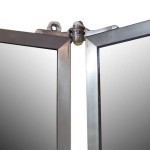Do Concave Mirrors Make Images Bigger or Smaller?
Concave mirrors, with their inwardly curving reflective surface, possess the unique ability to produce images of varying sizes, orientations, and natures. Whether an image appears larger or smaller, real or virtual, upright or inverted, depends entirely on the object's placement relative to the mirror's focal point and center of curvature.
Understanding Key Terms
Before delving into the image formation characteristics of concave mirrors, it's essential to define some key terms:
Focal Point (F): The point where parallel rays of light converge after reflecting off the mirror's surface.
Center of Curvature (C): The center of the sphere from which the mirror is a part. Its distance from the mirror's surface is the radius of curvature (R).
Principal Axis: An imaginary line passing through the center of curvature and the vertex (the midpoint) of the mirror.
Image Formation: Object Beyond C
When an object is placed beyond the center of curvature (further away from the mirror than C), the concave mirror forms a real, inverted, and diminished image. "Real" signifies that the image can be projected onto a screen, while "inverted" means the image is upside down compared to the object. "Diminished" indicates that the image is smaller than the object itself. This phenomenon is commonly leveraged in telescopes to focus distant celestial objects.
Image Formation: Object at C
Positioning the object precisely at the center of curvature results in a real, inverted image of the same size as the object. The image is also located at C. This characteristic has applications in certain optical instruments where accurate size representation is critical.
Image Formation: Object Between C and F
When the object sits between the center of curvature and the focal point, the resulting image is real, inverted, and magnified. This means the image is larger than the object itself. This principle is utilized in projectors to create enlarged images on a screen.
Image Formation: Object at F
Placing the object exactly at the focal point creates a unique scenario. Reflected rays from the object become parallel and do not converge to form a real image. In this case, no image forms, or one could describe the image as being formed at infinity.
Image Formation: Object Between F and the Mirror
When the object is located between the focal point and the mirror's surface, a virtual, upright, and magnified image is formed. A "virtual" image cannot be projected onto a screen; it appears to be behind the mirror. "Upright" means the image has the same orientation as the object. This is the principle behind the magnifying effect seen in makeup mirrors or shaving mirrors.
Magnification and Image Distance
The size and location of the image formed by a concave mirror can be mathematically predicted using the mirror equation and magnification formula. The mirror equation relates the object distance (do), image distance (di), and focal length (f):
1/do + 1/di = 1/f
The magnification (M) is the ratio of the image height (hi) to the object height (ho) and can also be expressed as the negative ratio of the image distance to the object distance:
M = hi/ho = -di/do
These formulas allow for precise calculations regarding image characteristics based on object placement and the mirror's focal length.
Applications of Concave Mirrors
The diverse image formation properties of concave mirrors lead to a wide range of applications across various fields. From astronomical telescopes capturing distant galaxies to headlights focusing light beams, concave mirrors play a crucial role in shaping our understanding and interaction with the world around us. Their utilization in everyday objects like shaving mirrors and solar cookers further underscores their versatility and importance.
Objects In The Mirror Are Actually Images Article Khan Academy

Question Comparing The Sizes Of Images Produced By A Concave Mirror Nagwa
Objects In The Mirror Are Actually Images Article Khan Academy
Objects In The Mirror Are Actually Images Article Khan Academy
Objects In The Mirror Are Actually Images Article Khan Academy
How Do Reflections From Convex Mirrors Make Objects Appear Smaller Quora

Concave Mirror
Objects In The Mirror Are Actually Images Article Khan Academy
Under Which Condition A Concave Mirror Can Form An Image Larger Than The Actual Object Quora

Can Concave Mirror Form A Virtual Image Quora

